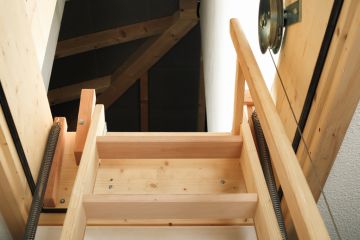Canberra auction report card, April 2020: Clearance rates nudge lower yet market still resilient

Canberra clearance rates slipped by more than 14 percentage points in April compared to the previous month and 3.5 percentage points below last year. With under half of the scheduled auctions sold, it produced the lowest monthly result since March 2019.
At 45 per cent, the clearance rate rivals the weak performance recorded early last year when it dropped to the lowest level since 2012.
Canberra’s auction market has been resilient compared to Sydney and Melbourne. In April, Sydney clearance rates plummeted to a 15-year low while Melbourne reached the lowest point on record.
| Property Type | Clearance Rate |
| All | 45% |
| Houses | 47.6% |
| Units | 29.6% |
Clearance rates had reached a 13-year high
Clearance rates had gathered momentum from mid-2019 and early into 2020. Just two months ago, clearance rates had reached a 13-year high at 78.2 per cent in February. However, the softer performance of March and April has deviated from that positive trend.
Auction ban stalls clearances
From March 25, the federal government placed a ban on public real estate auctions as part of social distancing measures to slow the spread of COVID-19. Many of the homes scheduled to go under the hammer in April would have been listed prior to this announcement and vendors had the choice of selling by private treaty, expressions of interest or trying a virtual auction.
The temporary ban on holding on-site auction gatherings changed the way property was transacted overnight and gave many vendors only a matter of days to decide whether to shift their on-site auction to a virtual one.
The number of auctions withdrawn in the immediate weeks following the ban bounced to record highs. In April almost one-third of the scheduled auctions were withdrawn. This was higher than the 15.6 per cent withdrawn in March and significantly above the decade average of around 4 per cent. Most remained for sale, however they were shifted to be sold by private treaty.
Auctions shift to private treaty
It is the high level of auctions withdrawn and shifted to private treaty that has pulled the clearance rate lower.
All auctions that are withdrawn, irrespective whether they remain for sale by another method, are technically classed as an “auction withdrawn” and are included within the unsold properties when calculating the clearance rate, which therefore has a negative impact on the end result.
The proportion of auctions withdrawn declines in a strengthening market, and the opposite occurs during weaker periods. It is an early sign of market weakness, although it may not mean significant price falls will ensue given the significant withdrawn lift was a direct response to a government policy change.
The volume of auctions withdrawn over the final Saturday in March was unprecedented, and this continued over subsequent Saturdays in April. No homes were withdrawn from auction on Anzac Day, however, the number going under the hammer was low. Over the coming weekends, it is expected withdrawn rates will become minimal while auction volumes remain low.
Sellers willing to transact before auction day
The portion of vendors securing a sale prior to auction day remains elevated. Just over one-quarter achieved a sale without even sending their home under the hammer. This is above the one-fifth of homes sold before auction recorded in March and significantly surpasses the one-in-10 decade average.
This could be an early sign to suggest a broader market slowdown, or it could indicate that a high proportion of vendors in April are seeking a timely sale in fear of what may be ahead.
To determine the performance of the auction market under the new virtual environment, a new metric “online auction success” analyses the auctions that occurred virtually, omitting those that shifted to be sold by other methods such a private treaty. The pool of auctions is significantly smaller therefore weekly results do fluctuate, reflecting the quality of stock being auctioned.
In the past clearance rates have been a leading indicator of price growth. The current decline in clearance rates does not necessarily mean prices will follow suit, given the impact is due to a change in the federal government social distancing policy.
In April the median auction price was $800,000 for houses. Due to the low volume of auctions, type and quality of stock going under the hammer, monthly auction prices can fluctuate wildly. On a rolling three-month average, the median auction house price rose 4.3 per cent over the year to $809,250.
| Region | Clearance rate | Annual percentage point change, clearance rate | Volume | Annual change, volume |
| Belconnen | 54.1% | 0.2ppt | 43 | -12.2% |
| Gungahlin | 55.2% | 16.7ppt | 33 | 26.9% |
| Inner North | 32.5% | -17.5ppt | 41 | 46.4% |
| Inner South | 42.1% | -1.4ppt | 20 | -13.0% |
| Tuggeranong | 58.3% | 12.2ppt | 26 | 0% |
| Weston Creek & Molonglo Valley | 35.0% | -8.8ppt | 20 | 25.0% |
| Woden Valley | 36.4% | -18.2ppt | 22 | -33.3% |
We recommend
States
Capital Cities
Capital Cities - Rentals
Popular Areas
Allhomes
More
- © 2025, CoStar Group Inc.






